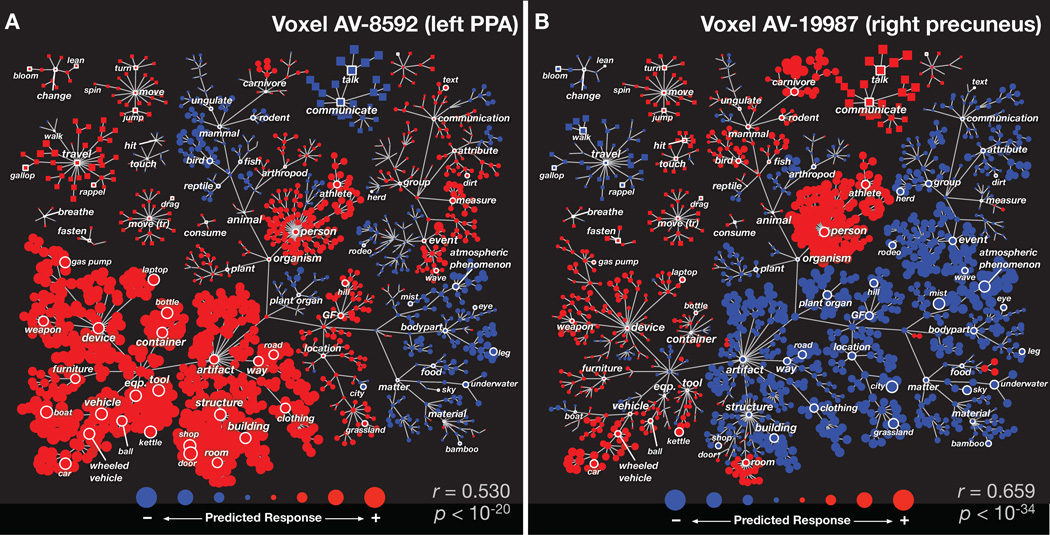Figure 2.
Category selectivity for two individual voxels. Each panel shows the predicted response of one voxel to each of the 1705 categories, organized according to the graphical structure of WordNet. Links indicate is a relationships (e.g. an athlete is a person); some relationships used in the model are omitted for clarity. Each marker represents a single noun (circle) or verb (square). Red markers indicate positive predicted responses and blue negative. The area of each marker indicates predicted response magnitude. The prediction accuracy of each voxel model, computed as the correlation coefficient (r) between predicted and actual responses, is shown in the bottom right of each panel along with model significance (see Results for details). (A) Category selectivity for one voxel located in the left-hemisphere parahippocampal place area (PPA). The category model predicts that movies will evoke positive responses when structures, buildings, roads, containers, devices, and vehicles are present. Thus, this voxel appears to be selective for scenes that contain man-made objects and structures (Epstein & Kanwisher, 1998). (B) Category selectivity for one voxel located in the right-hemisphere precuneus (PrCu). The category model predicts that movies will evoke positive responses from this voxel when people, carnivores, communication verbs, rooms, or vehicles are present, and negative responses when movies contain atmospheric phenomena, locations, buildings, or roads. Thus, this voxel appears to be selective for scenes that contain people or animals interacting socially (Iacoboni et al., 2004).

